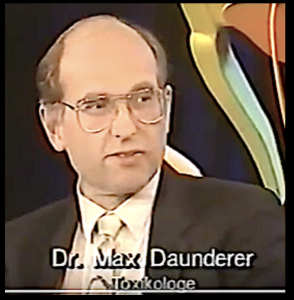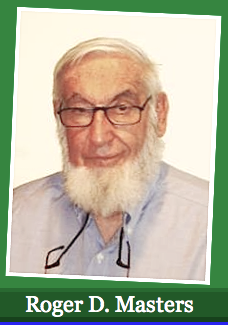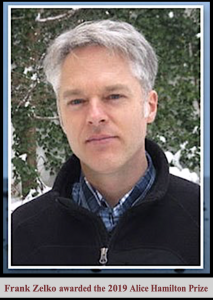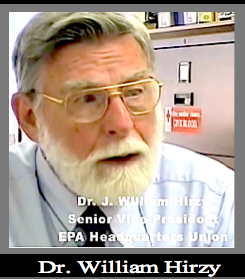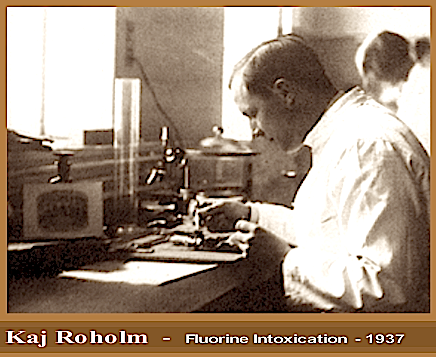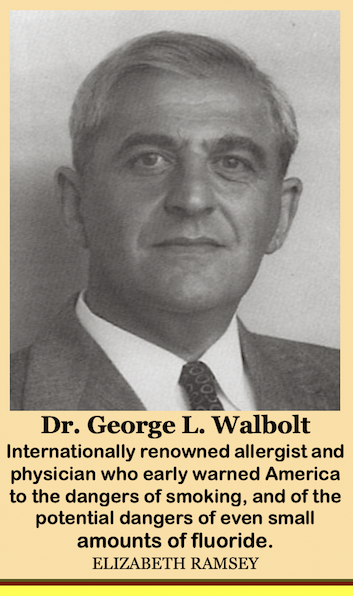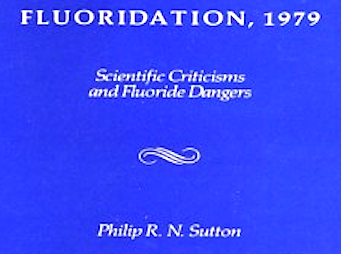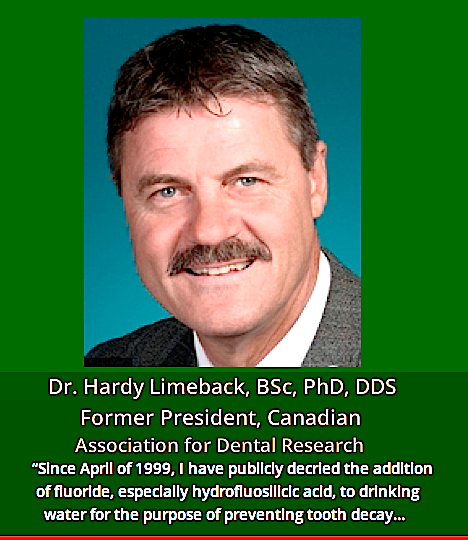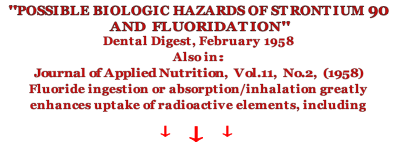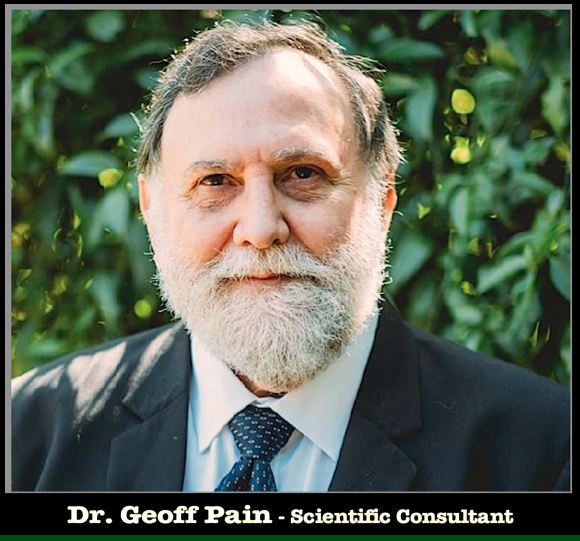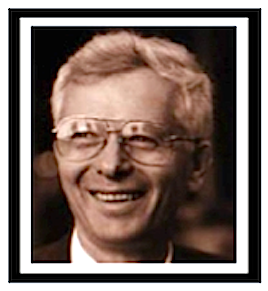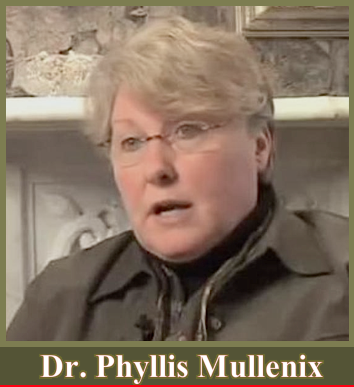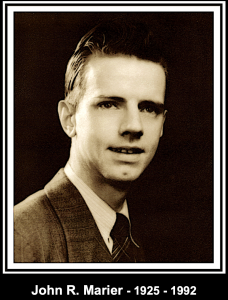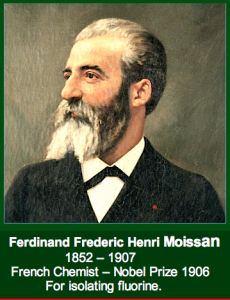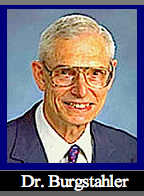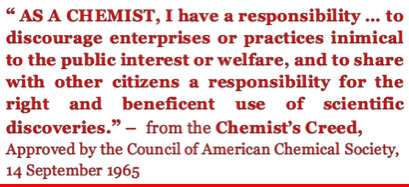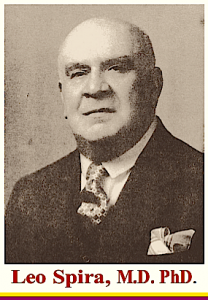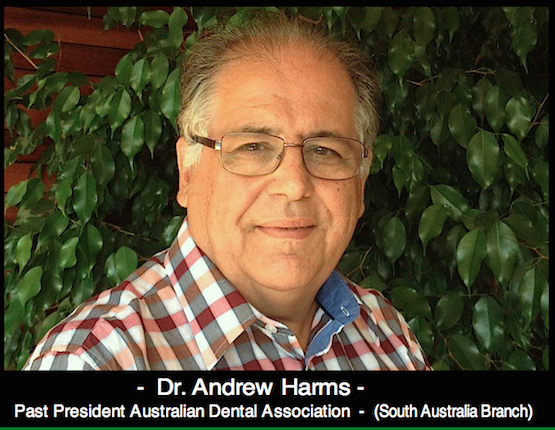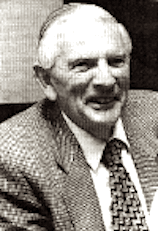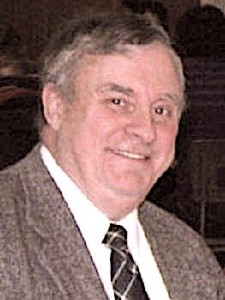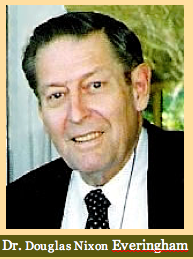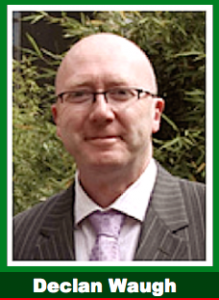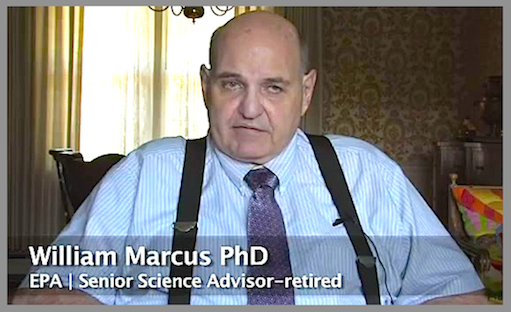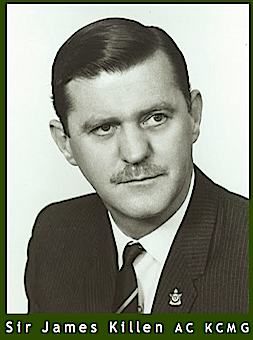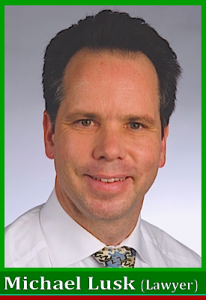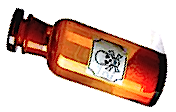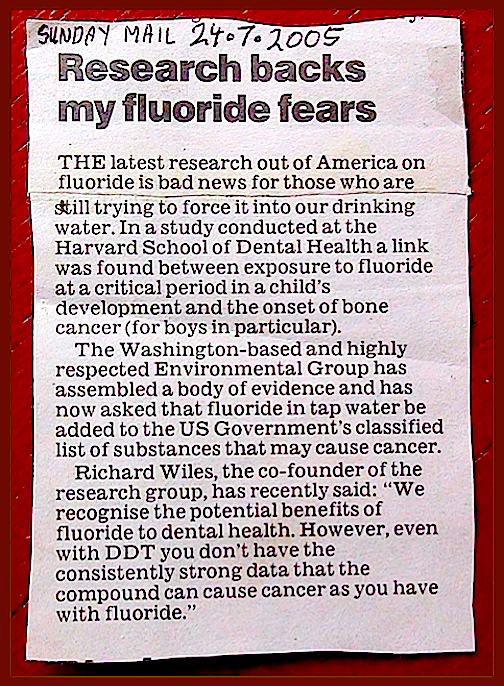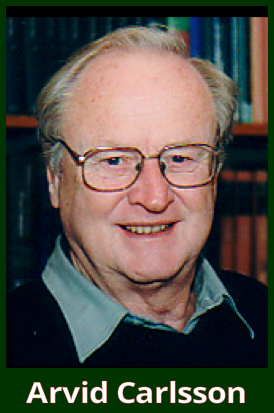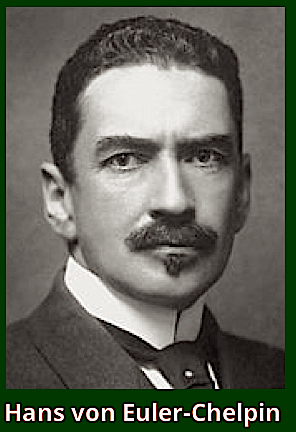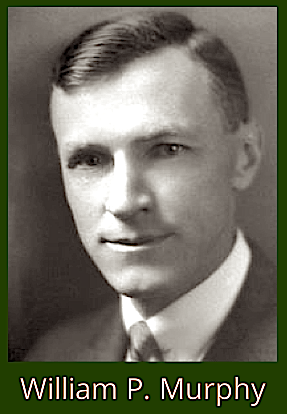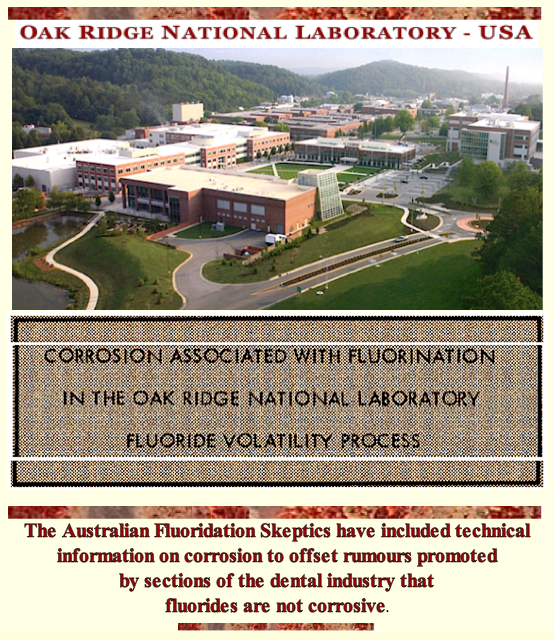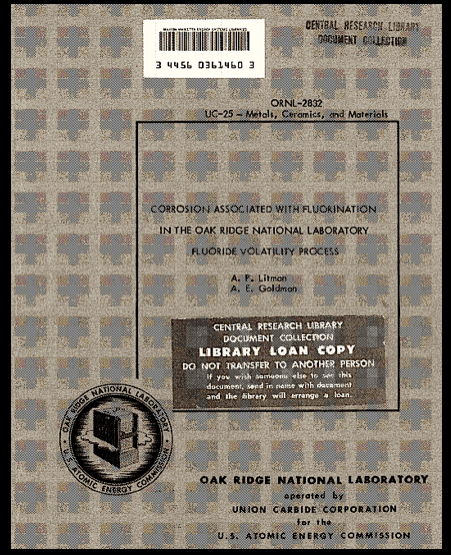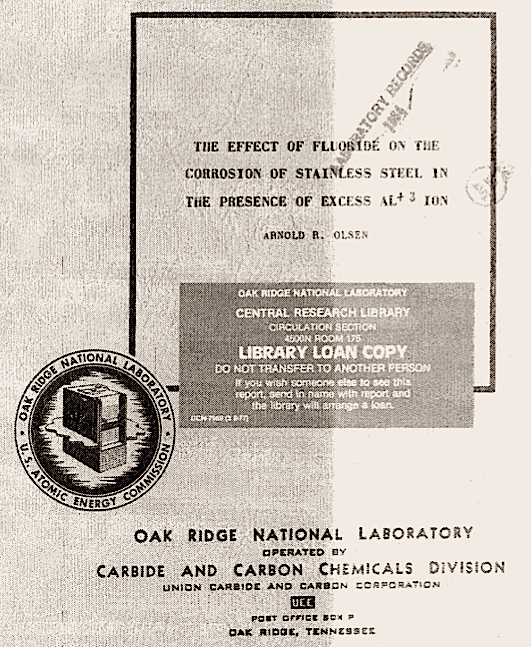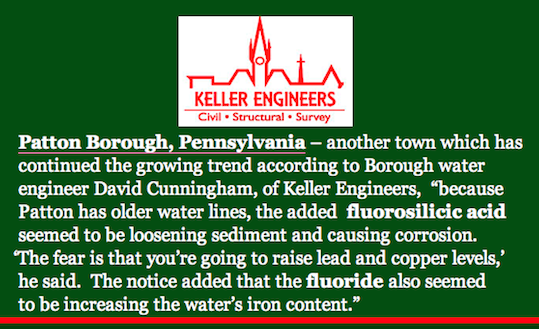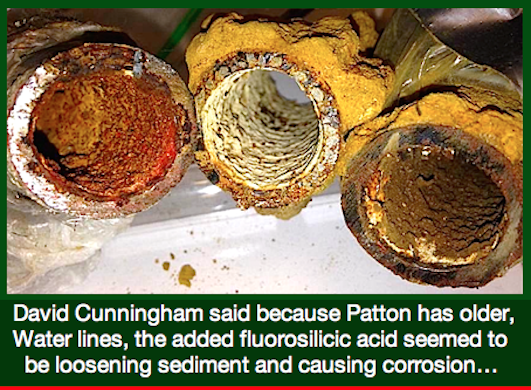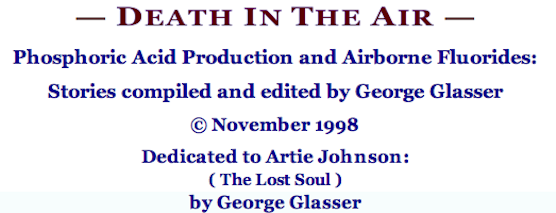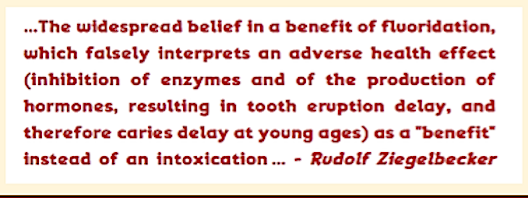The estimates of 83 million Americans taking drugs like Prozac ♦
for depression and 11 million children on Ritalin♦
for hyperactivity indicate it is time to reconsider the role of
brain chemistry in social behaviour and violent behaviour. ♦
Both contain fluoride See also on the same topic ↓ ↓ ↓
Fluoride, Lead And Pipes
→ Fluorides, Zinc and Anorexia Nevosa ←
AMALGAM – Patient Information – translated from the German
See more sites at the very end ↓ ↓ ↓
THE SOCIAL IMPLICATIONS OF NEUROSCIENCE:
LINKING BRAIN BIOCHEMISTRY AND VIOLENT CRIME
With special thanks to Rodger D. Masters.
THE SOCIAL IMPLICATIONS OF NEUROSCIENCE:
LINKING BRAIN BIOCHEMISTRY AND VIOLENT CRIME
Roger D. Masters (Dartmouth College)
THIS FILE IS A DRAFT OF THE CHAPTER WITH THIS TITLE IN:
Richard W. Bloom and Nancy Dess, eds., Evolutionary Psychology & Violence:
A Primer for Policymakers and Public Policy Advocates
(Westport: Praeger, 2003), pp. 23-56.
ABSTRACT:
It is impossible to deny that a revolution in neuroscience and other areas of biology has taken place over the last half-century. The estimates of 83 million Americans taking drugs like Prozac for depression and 11 million children on Ritalin for hyperactivity indicate it is time to reconsider the role of brain chemistry in social behavior and violent behavior. Since it is obvious that loss of impulse control can contribute to violent outbursts – and evidence shows that some toxic chemicals (such as lead) can have this effect, it is time to consider neuroscientific evidence linking environmental toxins and rates of violent behavior. To illustrate the implications of the new issues involved, I focus on a hitherto unexplored example. Two chemicals (H2SiF6 and Na2SiF6, jointly called “silicofluorides” or SiFs) are used to treat public water supplies of 140 million Americans even though, as the EPA has admitted, they never been tested for safety. To illustrate the interdisciplinary complexities entailed when linking brain chemistry to policy decisions concerning violent crime, our argument has four main stages: first, why might SiFs be dangerous? Second, what biochemical effects of SiF could have toxic consequences for humans? Third, on this basis a research hypothesis is formulated to measure the types of harm. In this case, we predict children in communities using SiF should have increased uptake of lead from environmental sources and higher rates of behavioral dysfunctions such as hyperactivity (ADHD) known to be caused by lead neurotoxicity. Finally, the hypothesis is tested using multiple sources of data including rates of violent crime studied using a variety of multivariate statistical techniques (including analysis of variance, multiple regression, and stepwise regression). As this outline should make clear, a combination of interdisciplinary perspectives and great prudence is needed to link research in neuroscience to policies concerning violent crime, If confirmed, however, the potential benefits of hypotheses like the one tested below may be great, revealing the generally unsuspected value of including neuroscientific research in the analysis of human social behavior.
Requests for reprints and correspondence should be directed to: Prof. Roger D. Masters, Department of Government, HB 6222, Dartmouth College, Hanover, NH 03755. Email: Roger.D.Masters@Dartmouth.edu
The full version of the above is on the net, and as the above suggests
adding silicofluorides to drinking water amounts to domestic terrorism.
Editor’s note:
Zinc deficiency can account for bad behaviour –
[ Fluorides are an antagonists of zinc. ]
Full original → HERE
SUMMARY:
A four-part study explores possible connections between water fluoridation and crime in America.
Part A, Media-reported crime database and fluoridation, presents an observational database of violent crimes, mostly multiple shootings, and finds an unusually high percentage of them associated with water fluoridation, suggesting the existence of a “fluoride-related” category of crime. A low-end threshold for the toxic effects of fluoridation of 0.3 ppm is identified, and the term “fluoridated” is defined here as having a fluoride level of 0.3 ppm or higher. In Part B, Online crime database and fluoridation, a published database of year 2000 crime data for 327 US cities over 75,000 population, representing 80 million Americans, was expanded to include fluoridation data for these cities. Water fluoridation was consistently associated with high crime rates at all population levels. Part C, Book crime database and fluoridation, examines year 2000 crime statistics for six major crimes in the same 327 cities according to their fluoridation status. Cities having natural fluoridation, or which use silicofluorides or sodium fluoride, are shown to have substantially higher crime levels than nonfluoridated cities. Part D, Lead related crime, quantifies the amount of crime historically associated with lead intoxication, thus identifying a remainder which may be associated with fluorides. This study presents a data-backed hypothesis about one possible cause of crime; it is not a definitive statement about crime causality.
Keywords: Crime; Fluoridation; Fluoride toxicity; Lead toxicity; School shootings; USA.
INTRODUCTION
In 1999 I observed that nine of ten randomly-selected school shootings in America had occurred in fluoridated communities, and that the shooter in the tenth had used Prozac, a fluorinated pharmaceutical.b With less than 60% of the U.S. population fluoridated, a non-random correlation between fluoride and violence was suspected.
Others have connected fluorides with violence. Grandjean et al identified significantly elevated mortality due to violence and suicide among Danish cryolite workers.1 Several studies have examined effects of fluoride on mental development, brain function, and behavior. Li et al, Zhao et al, and Xiang et al showed that high fluoride exposure reduces intelligence in children.2-4 Varner et al documented the effects of aluminum fluoride and sodium fluoride with neuronal damage, dementia, and mortality in rats.5,6 Mullenix et al documented detrimental CNS effects of sodium fluoride in rats, showed that timing of fluoride (a).
Correspondence: Jay Seavey, AIA emeritus, P.O. Box 5234, Manchester, NH, USA 03108-5234. E-mail: jayseavey1618@earthlink.net bKip Kinkle murdered his parents, then killed 2 and wounded 22 in a school shooting on 5/21/98 in unfluoridated Springfield, OR. The police report indicated that he had previously been treated with Prozac [fluoxetine hydrochloride]. A structural formula for Prozac appears in Physicians’ Desk Reference, 53rd ed., Montvale NJ: Medical Economics; 1999. p. 924. The other nine fluoridated locations noted at the time were: Moses Lake, WA; Bethel, AK; Pearl, MS; West Paducah, KY; Jonesboro, AR; Edinboro, PA; Fayetteville, TN; Littleton, CO; and Taber, Alberta, Canada. My observations were made at a public hearing on fluoridation held in Manchester, NH, and reported in The Union Leader (Manchester, NH)1999 Sept 23, Sect. A:1,20.
Fluoride 2005;38(1)
12 Suavely [?] exposure can be developmentally critical, identified sex-linked differences in some of these effects, and demonstrated fluoride accumulation in the brain.7 Others have explored heavy metal intoxication with and without fluorides, and their mental and behavioral effects. Needleman et al showed psychological impairment and behavioral deficits in children from lead exposure.8 Masters and Coplan focused attention on elevated blood lead levels when silicofluorides are used for water fluoridation.9 Other work by Masters et al addressed manganese and lead toxicity, and silicofluoride use, relative to crime, alcoholism, and cocaine/crack abuse; and identified a time lag between the removal of lead from gasoline, and a later decline in crime rates.10 Fluoride, by itself and in conjunction with heavy metals, appears to alter brain function and to predispose some humans to violence. It seemed timely to study more directly the relationship between fluoridation and crime: cumulatively, these earlier studies led to an expectation that such a relationship could be demonstrated.
The work reported here is divided into four parts, A, B, C and D. They evolved sequentially over about four years, and do not reflect a methodology adopted from the outset.
MATERIALS AND METHODS
Part A: Media-reported crime database and fluoridation
Stories were accumulated from news mediaa over a period of approximately two years and assembled into a database (“A”) of 152 events, most of which occurred between 1993 and 2001 (media stories sometimes reported sequelae, such as court proceedings). The stories were primarily of multiple shootings, but also included unexecuted events involving weapons and similar ideation. The database also included some stabbings, drownings, arsons, and bombings, the
A The collecting of news stories utilized The Union Leader (Manchester, NH), and America Online; many of the stories from these sources originated from The Associated Press or from Reuters. The stories were selected, based on their content and on my intuition, from my routine daily reading, rather than from a methodical or exhaustive search using, for example, keywords or search engines. Events were typically multiple murders, usually with firearms, having an apparent “senseless” character to them. Events with known motives (except crimes grossly disproportionate to their motives), or which were known to be gang-or drug-related, were excluded. Domestic violence was excluded unless the victims included children. Stories were typically clipped, or were downloaded and printed, and placed in a file; periodically, the file would be reviewed, and the fluoridation status of the locations and of the perpetrators would be determined using the Fluoridation Census 1992. American Automobile Association roadmaps for the entire United States were regularly consulted to gain information about locations mentioned in news stories. In many cases telephone calls were made to get detailed information about local water systems. Calls were also made, with far less success, to get information about perpetrators and their life histories. Law enforcement personnel were generally reluctant to divulge much in the aftermath of an event, while it was still being investigated. Efforts to gain information from news writers were equally fruitless. In many instances, a succession of news stories over a period of time was needed to extract basic information about an event, as the initial reporting about a multiple shooting might be sketchy. On several occasions, after a major event, the news sources carried a list of 10 or 15 similar events—school shootings, workplace shootings, etc. These event lists, if they included events I had not already listed, were typically searched out using the Internet. This, along with current reporting of event sequelae [squealed], such as court proceedings, provided an avenue for including events going back several years. These lists also provided a basis for comparison: by the time I had accumulated 152 events, the database was more inclusive, by a factor of ten, than the longest of these lists which the media had presented; yet it is by no means deemed to be exhaustive.
Fluoride 2005;38 (1)
Water fluoridation and crime in America 13 common denominator being the heinous and senseless character of the crimes, and an absence of apparent motive. In each case, after an event was identified for inclusion in the database, a search was later made to determine the fluoridation status either of the place where the event occurred, or of the place where the perpetrator lived. A fluoridated community is defined for this study as one having a fluoride level of 0.3 ppm or more in the public water supply.a A statistical analysis was then performed, comparing the “fluoridation-connection” of the collected events with the nationwide fluoridation level. As a control, database “B” was developed, utilizing 164 randomly selected stories published between 1993-2001 in “The Armed Citizen”, a regular column in American Rifleman, a monthly magazine published by the National Rifle Association. These stories reported incidents in which firearms were used by citizens for self-defense.
Part B: Online crime database and fluoridation
Noting that Part A was somewhat limited by the particular type of crime it focused on, I broadened the search to include publicly-available data on a wider category of crimes. A database by Morgan Quitno Press (MQP), Lawrence, Kansas, published in book form and posted online, listed crime data for the year 2000 for 327 American cities having populations over 75,000, and rated their comparative safety according to a score or index which represented their aggregate incidence, based on FBI crime statistics, for six major crimes: murder, rape, robbery, aggravated assault, burglary, and motor vehicle theft.11,12 The score for each of the 327 cities was referenced to a national average of 0.00, and
aThe U.S. Public Health Service has generally defined “fluoridated” water as having a fluoride level at or above 0.6-0.7 ppm. The reason for selecting a lower level of 0.3 ppm to define “fluoridated” for the purposes of this study is as follows: Human physiology has some capacity for detoxifying and eliminating fluorides. Dental fluorosis offers the most readily-available and visible indicator for fluoride intoxication. Therefore, if we can establish a level below which this toxicity is not evident, it provides at least a speculative basis for considering that other toxic effects we are hypothesizing about may also not manifest themselves below this level. In other words, we are not interested in a level above which some hypothetical dental benefit allegedly occurs; we are concerned, rather, with the level below which toxic effects are not in evidence. H. Trendley Dean, DDS, in “Epidemiological studies in the United States” (In: FR Moulton, editor. Dental Caries and Fluorine. Washington, DC: American Association for the Advancement of Science, 1946. p. 5-31.) provides data from America necessary to make this determination. While Dean does not identify 0.3 ppm as a definitive cut-off level for the appearance of dental fluorosis, his tabulated data in Table XI, page 23, show that the prevalence of dental fluorosis begins to rise sharply above a fluoridation level of 0.3 ppm, and that the few observed cases occurring below this level are characterized as “very mild”. The appearance of dental fluorosis probably does not hinge solely on fluoride in drinking water; it probably reflects nutrition in general, and the mix of other minerals in the drinking water. Fluoride exposure relates partly to diet, being high, for example, in a diet high in seafood. The toxic manifestations of fluoride, it is believed, are also reduced by activities which remove fluoride from the system, such as hot-water bathing or sweat bathing. There is a discussion in Fluoridation: The Great Dilemma (Waldbott GL, Burgstahler AW, McKinney HL. Lawrence KS: Coronado Press, 1978. p. 180), of significant levels of dental fluorosis on the South Atlantic island of Tristan da Cunha, where the fluoride level is 0.2 ppm. This, however, seems to be the extreme end of the spectrum, and it may reflect a diet high in fish, but possibly relatively deficient in Vitamin C, calcium, and/or magnesium. For all of these reasons, but particularly on the basis of Dean’s American data, 0.3 ppm and above was chosen to define the term “fluoridated”. It is not suggested that fluoridation levels below 0.3 ppm have no toxicity, or that this represents a “safe” level of fluoride in water.
Fluoride 2005;38(1)
14 Seavey
scores ranged from –84.94 (safest) to 373.28 (most dangerous). The MQP database for its “Safest Cities Award” includes nearly 80 million Americans—about 28.5% of the U.S. population. a I modified this database by adding fluoridation data for each of the 327 cities, and then sorted the list into six groups by population size. Within each group, cities were listed according to increasing “score” or “crime index”. Each of the six groups was then bifurcated, to identify a Low Crime subgroup and a High Crime subgroup within each population group. Total fluoridation incidence for each of the six population groups was determined, and its percentage was calculated. These percentages determined the expected fluoridation incidences for the Low Crime and High Crime subgroups within each population group. Expected incidences were then compared with observed incidences for each of the 12 subgroups, and the differences were noted. (See Table 1.) A two-way table of the differences was developed, and the chi-squared statistic was calculated. (See Table 2.)
Part C: Book crime database and fluoridation
MQP does not tell us in City Crime Rankings, 8th edition, what formula was used to generate scores for its “Safest City Award.” While these scores are said to allow a direct comparison of cities on the basis of their crime rates, we are not told how these scores or crime index figures can be translated into actual crime rates, and thence, using population data, into actual numbers of crimes. For this reason, I have used MQP’s more detailed published crime rate data, to develop this information.13 For each of the 327 cities, actual year 2000 rates for each of the six major crimes were entered and then totaled into an aggregate crime rate for each city. Fluoridation data were then entered for each city. The 327 cities were then sorted in database “327” according to their fluoridation status. Within each of the fluoridation categories, the cities were sorted by ascending aggregate crime rate.
Part D: Lead related crime
The connection between lead intoxication and criminal behavior appears to be well established.9 The phase-out of leaded gasoline began in the U.S. in 1976;14 airborne pollution from this source was the primary cause of lead intoxication, with lead from paints and from solder in food cans generating further exposures.
As documented by the National Health and Nutrition Examination Surveys (NHANES) blood lead levels in Americans aged 1–74 declined by 78% between 1978 and 1991, and by 76% in ages 1–5. 15 Subsequent research shows the aIt is stated on p.1 of City Crime Rankings11 under the heading “Methodology”: “First, city and metro crime rates for six basic crime categories—murder, rape, robbery, aggravated assault, burglary and motor vehicle theft—were plugged into a formula that measured how a particular city or metro area compared to the national average for a given crime category. The outcome of this equation was then multiplied by a weight assigned to each of the six crime categories. For this year’s award (2000), each of the six crimes was given equal weight. By weighting each crime equally, cities are compared based purely on their crime rates and how they stack up to the national average for a particular crime category. These weighted numbers then were added together for a city or metro area’s final score.”
Fluoride 2005;38(1)
Table 1. 327 Cities grouped by population, with groups bifurcated into high and low crime sub-groups
a The % difference in population size was calculated by taking the difference in the average population between the two subgroups, dividing by the size of the smallest group, and multiplying by 100.
Fluoride 2005;38(1)
16 Seavey
Table 2. Chi-squared statistics for 327 cities grouped by population, with groups bifurcated into sub-groups by crime level and fluoridation status
Population Group Size
Expected (based on the fraction of the population group non-fluoridated) and observed numbers of non-fluoridated population subgroups
Crime level subgroup
Expected (based on the fraction of the population group fluoridated) and observed numbers of fluoridated population sub- groups
(Database)
[N]
*(Observed- Expected) 2/Expected. Total for high crime subgroup 10.9522, low crime subgroup 10.9705, both subgroups χ2 =21.9227
†Comparing the expected and observed numbers of subgroups that were fluoridated. p<0.05, χ2=21.9227, df=11.
Fluoride 2005;38(1)
Water fluoridation and crime in America 17 continuation of this decline at a reduced rate through 1994.16 (See Figure, which plots historical data with solid lines, projects these trends with dashed lines, and compares trends for lead and crime levels, starting with peak numbers for each representing 100% on the same scale.) Lagging the peak and decline of lead levels by about 13 years, violent crime peaked in 1991, and decreased about 30% by 2000.a,17
Blood lead μg/dL 109 4000
US average crime rate per 100,000 population in children aged 1–5 yrs
8 7 3000
15 14 13 12 11
6000 5000
6 5 2000 4 3 2 1 0
0 1976 1980 1984 1988 1992 1996 2000 2004 2008
NHANES NHANES NHANES II III–1 III–2
NHANES = The National Health and Nutrition Examination Surveys Figure. Declines of blood lead and crime
RESULTS
Part A: Media-reported crime database and fluoridation
The carnage for 134 executed events in database “A” includes 325 killed and 224 wounded—about 4.1 casualties per event. b At the midpoint of the period in which these events occurred—March 1997—an estimated 57.5% of the US population was fluoridated. c Of the total of 152 executed and ideational events listed in database “A”, 128 (84.21%) occurred in fluoridated communities or were committed by criminals from fluoridated communities. Of 128 locations
A City Crime Rankings17 shows that crime had hit a similar peak of 5,850 per 100,000 in 1981, dropped to 5038.4 for unclear reasons by 1984, and then increased for 7 years to its 1991 peak of 5,898.4. bThe 1995 bombing of the Federal Building in Oklahoma City is included in database “A”, but the casualties [168 killed, 853 wounded] are not included in this summary, as they would badly skew the portrayal of a typical event. Timothy McVeigh, the convicted bomber, grew up in the fluoridated town of Pendleton, New York, and was stationed at two fluoridated army bases, Fort Benning, GA, and Fort Riley, KS. McVeigh’s remorseless lack of empathy for his victims is believed to exemplify the mental condition of a fluoride-intoxicated killer.
C Data extrapolated/projected from chart and graph, p. xxii- xxiii of Fluoridation Census 1992. US Department of Health and Human Services, Public Health Service, Centers for Disease Control and Prevention, National Center for Prevention Services, Division of Oral Health, Atlanta Georgia 30333. September, 1993. An annual increase in the fluoridated population of 0.4%, from a 12/31/92 level of 55.8%, is projected.
1000
Fluoride 2005;38(1)
18 Seavey related to these events, 98 use silicofluorides, 17 use sodium fluoride, 12 have natural fluoridation, and one combines natural and artificial fluoridation. The average fluoridation level for these 128 communities is 0.983 ppm, and the range is from 0.3 ppm to 4.9 ppm.
Using a population mean of 0.575, a one-sample t test determined the probability of randomly selecting from a 152-count simple random sample (SRS) a sample mean of 0.8421. The null hypothesis, that water fluoridation and these violent crimes vary independently and are unrelated, is rejected (P<0.0005, t=9.001, df=151).18 For database “B”, it was expected that 57.3%, or 94 of the 164 locations identified would be fluoridated. The sample mean was 98 of 164, or 59.8% (one-sample-t-test: P>0.25, t=0.5883, df=163). The chance is thus better than 1 in 4 that the null hypothesis is true, i.e., that fluoridation and gun-based self-defense are randomly associated. So this is a useful control, allowing us to rule out fluoridation-related vagaries of crime reporting or of firearm distribution as a basis for the findings in database “A”. Nevertheless the only valid inference from database “A” concerns the extreme improbability of randomly observing 84.21% fluoridation-related events in a 152-count SRS when only 57.5% were expected.
Crime reporting in the media, and the statistical categorization of crime by the F.B.I., lack at this time a nuanced awareness for identifying “fluoride-related” crime. Whether database “A” demonstrates the objective existence of such a category, or whether it demonstrates that an observer can learn to identify such events from subtle cues found in news stories, it may be seen that both possibilities strongly suggest that such a category exists. The development of database “A” was in any case a necessary step for building a hypothesis of a connection between water fluoridation and crime.
Part B: Online crime database and fluoridation
The six population groupings eliminate city size as a confounding variable, and provide a spread for analyzing variance. Each of the six High Crime subgroups had an average “score” or “crime index” at least 100 points above its corresponding Low Crime subgroup. All six High Crime subgroups had more places fluoridated than expected; all six Low Crime groups had fewer places fluoridated than expected (P<0.05, χ2 = 21.9227 df =11).19 This validates the following preliminary inference: “In American cities having population over 75,000, high crime levels appear to be significantly correlated with water fluoridation.”
Part C: Book crime database and fluoridation
The results are summarized in Table 3. The fluoridation status “Combined”— which is a combination of natural and artificial fluoridation—is an anomaly in having a crime rate 2.9% lower than the non-fluoridated cities.
All of the other types of fluoridation are associated with elevated crime rates. Compared to the crime rate for non-fluoridated cities, natural fluoridation shows a 16.5% higher crime rate; sodium silicofluoride a 37.6% higher crime rate; hydrofluorosilicic acid a 46.8% higher crime rate; and sodium fluoride an 84.9%
Fluoride 2005;38(1)
Water fluoridation and crime in America 19 higher crime rate. Table 3 incorporates population data which are used to convert these elevated crime rates into a putative number of excess crimes associated with water fluoridation in these cities.
Fluoridation statusa
No 122 fluoridation
Combined (natural 12 & artificial)
Natural 18
Sodium silico- 56 fluoride (NaSiF6)
Hydrofluorosilicic 112 acid (H2SiF6)
Sodium fluoride 7 (NaF)
Totals 327 Averages –
Table 3. 327 cities grouped by fluoridation stat
Num- Average ber population
Total population b
Total for 6 major crimes for year 2000
Crime rate, for 6 major crimes, per 100 000 population
Crime rate compared to no fluoridation cities
of cities Excess crimes compared to no fluoridation
cities c
79,381,078 1,851,474 – –
0.0 -53.1 -2,826
*The data are from database “327”. aFluoridation data are generally taken from Fluoridation Census 1992 [US Department of Health and Human Services, Public Health Service, Centers for Disease Control and Prevention, National Center for Prevention Services, Division of Oral Health, Atlanta, Georgia 30333, USA; September, 1993] with some corrected and updated information based on telephone inquiries. The category “Other” identified in the Fluoridation Census 1992 has been identified here as “Combined”. bPopulation and crime data are from Morgan KO, and Morgan S, editors, City Crime Rankings, 8th ed. Lawrence, KS: Morgan Quitno Press; 2001. c“Excess Crimes” are calculated by dividing the total population figure on a line by 100,000 and multiplying the result by the crime rate compared to no fluoridation cities on that line. These “excess crimes” are only those for the 327 cities over 75,000 population, totaling 28.5% of the US population. †The total population, 79,381,078, divided by 327, yields the average population per city, 242,755.5902, which is rounded to the nearest whole number. ‡First, the total population, 79,381,078, is divided by 100,000, yielding 793.81078. Second, the total number of crimes, 1,851,474, is divided by this 793.81078, yielding the quotient 2332.387071, which is rounded to two decimal places. This is the average crime rate per 100,000 population for all the 327 cities, including the 122 which are not fluoridated.
Fluoride 2005;38(1)
20 Seavey Part D: Lead related crime
If we accept the premise that the observed decline in crime is the result of the decline in lead intoxication, we can roughly quantify the amount of crime associated with lead intoxication by comparing the curves for the historical declines in lead and crime, and by projecting them forward from 1993 and 2000, respectively. (See Figure on page 17.)
Projecting the lead level decline on a straight line, it reaches zero by the beginning of 2004. This is an analytically useful end point, even if lead levels will more likely taper off on a curve to a steady state reflecting more or less permanent levels of environmental pollution. The crime decline is projected beyond 2000 along a straight line following its 9-year trend. Note that at the point in time where the straight-line projection for lead reaches zero, the crime rate is still at about 3,365 per 100,000, down from its 1991 peak near 5,900.a
It is thus estimated that by 2004, with blood lead reduced to minimal levels, we will still have 57% of our 1991 peak crime level. It follows that less than half of the 1991 peak level of crime can be attributed to lead intoxication. Alternatively, we would have to hypothesize that relatively low levels of lead generate disproportionately large amounts of crime, and that the relationship between lead levels and crime is extremely non-linear, to a degree that we have seen no reason to suspect.
DISCUSSION
The data show a consistent association between water fluoridation and high crime levels. The traditional socio-cultural determinants of crime—poverty, crowded cities, broken homes, drug use, gangs, and the like—have not been analyzed here as confounding factors, so a causal role for fluorides in crime has not been definitively proven, nor has the role of fluorides been quantitatively established vis-à-vis these other factors. And while conclusions about the statistical significance of findings in Part B remain tentative, all the data nevertheless point in the same disturbing direction, raising serious questions as to whether water fluoridation could possibly be as “safe and effective” as public health authorities and dentists have claimed it to be.
The information on sodium fluoride—despite the small sample—is of particular interest, since sodium fluoride, unlike the silicofluorides, shows little association with elevated blood lead levels.9 It thus appears that sodium fluoride may be associated with crime independently of lead. If sodium fluoride—a salt which dissociates into sodium and fluoride ions in water—is associated with crime independently of a role in the uptake of lead, given that sodium is a normal and well-regulated feature of the human system, it follows that the fluoride ions must be the factor associated with the crime. It then follows that, even in the case of the silicofluorides, the fluoride ions must themselves be contributing to crime
aNote that these rates include larceny and theft, in addition to the six major crimes reported on elsewhere in this paper, so the total rates are higher and cannot be compared to the aggregate rates for the six major crimes reported by MQP.
Fluoride 2005;38(1)
Water fluoridation and crime in America 21 independently of silicofluoride’s role in the uptake of lead. Bear in mind that these crime statistics are from the year 2000, when environmental lead had been significantly reduced, and that while the MQP crime data are for the year 2000, the data from the Fluoridation Census are from 1992. The latter are less recent, obviously, but they are the most recent readily available data.
Chemical exposures clearly affect brain function and behavior: lead and mercury are well documented in this regard, and fluorides are gradually becoming better understood. Chemically based crime causality, however, seems to be of a qualitatively different order from the traditionally-accepted types of socio-cultural crime causality. The relationship between these broad categories of causality needs further study, and perhaps a new paradigm is needed to integrate them into a coherent theory.
If the history of lead is any example, however, there may be reason for optimism. Unlike the seemingly intractable socio-cultural determinants, chemical exposures may be amenable to long-term change.
Crime is a measure of social dysfunction, and a barometer for socio-economic dislocation and change. Its causes are infinitely varied in their particulars, nebulous in their totality, and they vary historically from one era to the next. The historical context at any given time, moreover, cannot be duplicated experimentally, challenging the use of scientific methods; and the data that are available to us tend to be colored to some extent by the preoccupations and motives of the era and the people that produced it. There is thus an evident need for an interdisciplinary approach to crime, and for a paradigm which integrates chemistry, statistics, sociology, and history, at a minimum.
The post-Civil War era, for example, saw a significant rise in American crime rates.20 The war may have inured the population to violence; the post-war westward expansion may have created a less-well-ordered frontier society; or those frontiers may have included numerous areas with high fluoride levels in the groundwater—three competing explanations which would doubtless challenge the available data. And while the data in this study focus on the United States during the 1990’s, there are nearby anomalies such as unfluoridated Vancouver, British Columbia., which has experienced high crime rates associated with gangs, drugs, immigration, and ethnic conflict. Immigration, migration, and relocation create difficulties in tracking exposure to fluorides. In the United States, the Clean Air Act (1970) did not address airborne fluorides at all, so we have virtually no data for evaluating exposures from this source.
The senseless multiple shooting became the signature crime of the 1990’s in the United States. Fluoride exposures in many areas may have passed a threshold beyond which “fluoride-related crime” became common. Saturation of Americans with fluorides, via public water supplies, continues to expand. I think we can currently discern the resultant crime effects due to their locational variations. If water fluoridation were ended, it might take a generation for the effects to recede. If it continues to expand, the “signal” identified in this study may get lost in the “noise” of endemic violence.
Fluoride 2005;38(1)
22 Seavey
ACKNOWLEDGEMENT
The author wishes to thank Phyllis Mullenix for pointing out Grandjean’s article. I would also like to thank Prof Burgstahler for his help in organizing this material, and Dr Spittle for his patience in formatting and typesetting it.
REFERENCES
-
. 1 Grandjean P, Juel K, Jensen OM. Mortality and cancer morbidity after heavy occupational fluoride exposure. Am J Epidemiol 1985;121:57-64.
-
. 2 Li XS, Zhi JL, Gao RO. Effect of fluoride exposure on intelligence in children. Fluoride 1995;28(4):189-192.
-
. 3 Zhao LB, Liang GH, Zhang DN, Wu XR. Effect of a high fluoride water supply on children’s intelligence. Fluoride 1996;29(4):190-2.
-
. 4 Xiang Q, Liang Y, Chen L, Wang C, Chen B, Chen X, et al. Effect of fluoride in drinking water on children’s intelligence. Fluoride 2003;36(2):84-94.
-
. 5 Varner JA, Horvath WJ, Huie CW, Naslund HR, Isaacson RL. Chronic aluminum fluoride adminstration: I. Behavioral observations. Behav Neural Biol 1994;61:233-41.
-
. 6 Varner JA, Jensen KF, Horvath W, Isaacson RL. Chronic administration of aluminum-fluoride or sodium-fluoride toratsindrinkingwater:alterationsinneuronalandcerebrovascularintegrity. Brain Res 1998;784:284-98.
-
. 7 Mullenix PJ, Denbesten PK, Schunior A, Kernan WJ. Neurotoxicity of sodium fluoride in rats. Neurotoxicol Teratol 1995;17(2):169-77.
-
. 8 Needleman HL, Gunnoe C, Leviton A, Reed R, Peresie H, Maher C, et.al. Deficits in psychologic and classroom performance of children with elevated dentine lead levels. N Eng J Med 1979;300: 689-95.
-
. 9 Masters RD, Coplan MJ. Water treatment with silicofluorides and lead toxicity. Int J Environ Stud 1999; 56:435-49.
-
. 10 Masters RD, Coplan M. A dynamic, multifactorial model of alcohol, drug abuse, and crime: linking neuroscience and behavior to toxicology. Soc Sci Information 1999; 38:591-624.
-
. 11 Morgan KO, Morgan S, editors. City Crime Rankings. 8th ed. Lawrence, KS: Morgan Quitno Press; 2001. p. 1-5.
-
. 12 8th Annual safest cities award. [database on the Internet]. Lawrence, KS: Morgan Quitno Press; c2001 – [cited 2001]. Originally available from: http://www.statestats.com/cit02.safe.html. This URL is no longer available. An updated version is available at Morgan Quinto Press [homepage on the Internet] from http://www.morganquinto.com/.
-
. 13 Morgan KO, Morgan S, editors. City Crime Rankings. 8th ed. Lawrence, KS: Morgan Quitno Press; 2001. p. 214-5, 226-7, 246-7, 262-3, 294-5, 236-7.
-
. 14 Kitman JL. The secret history of lead. The Nation. 2000 Mar 20:11-44. p. 37.
-
. 15 Pirkle JL, Brody DJ, Gunter EW, Kramer RA, Paschal DC, Flegal KM, et. al. The decline in blood
lead levels in the United States: the National Health and Nutrition Examination Surveys
(NHANES). JAMA 1994 July 27;272(4):284-91.
-
. 16 U.S. Department of Health and Human Services, Public Health Service, Centers for Disease
Control and Prevention. Update: blood lead levels – United States, 1991-1994. MMWR Morb
Mortal Wkly Rep 1997 Feb 21;46(7):141-6.
-
. 17 Morgan KO, Morgan S, editors. City Crime Rankings. 8th ed. Lawrence, KS: Morgan Quitno
Press; 2001. p. 394-5.
-
. 18 Moore DS, McCabe GP. Introduction to the Practice of Statistics. 3rd ed. New York: WH Freeman;
1999. p. 507-12, Table D, p. T-11.
-
. 19 Moore DS, McCabe GP. Introduction to the Practice of Statistics. 3rd ed. New York: WH Freeman;
1999. p. 624-32, Table F, p. T-20.
-
. 20 Pearl M. The Dante club. New York: Random House; 2004. p. 376.
Published by the International Society for Fluoride Research http://homepages.ihug.co.nz/~spittle/fluoride-journal.htm
Editorial Office: 727 Brighton Road, Ocean View, Dunedin 9051, New Zealand

